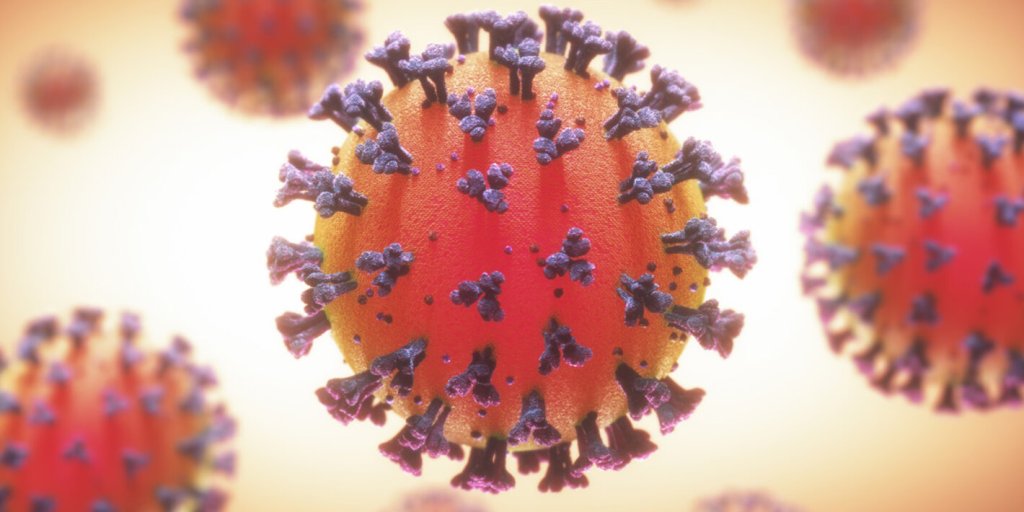COVID-19 data shows state, region heading back up the roller coaster as holidays approach
Published 1:00 pm Monday, November 23, 2020

- Orange Purple Covid
As the Thanksgiving holiday approaches, the indicators of increased COVID-19 activity are continuing to climb, hitting points last seen as the summer peak of the disease was waning.
According to the latest update last Wednesday, the state’s seven-day average of tests given as of Nov. 11 was 239.3 tests per 10,000 residents. The positivity rate among those tests was 7.5 percent, a number last seen on Aug. 19.
But in Region 4, the Nov. 11 numbers were even worse. The testing rate in the region was marginally above the state average, at 242.7 tests per 10,000 residents. The seven-day average percent positive of those tests, however, was well above the state average at 10.3 percent. That is the highest it has been since Aug. 12, when it was 10.8 percent, and more than a 70 percent increase from the previous week.
The Louisiana Department of Health reporting of data on hospitalizations due to the disease tracks with those numbers. On Monday, the state reported 1,012 hospitalizations as of Sunday, an increase of 45 from 967 on Saturday. The number of patients on ventilators rose by nine, to 114 Sunday. That is up from 105 on Saturday. The lkast time those numbers were in that range was on Aug. 21.
The number of COVID-19 hospitalizations in Region 4, which covers Acadiana, rose by 19 to 152 on Sunday, up from 133 on Saturday. The number of patients on ventilators Sunday rose to 17, up by three from 14 on Saturday. Those types of numbers also hearken back to Aug. 19 and 20.
The overall intensive care bed occupancy rate in Region 4 was still high at 87.5 percent Sunday, with 140 beds occupied and 20 ICU beds still available. The total number of ICU beds available was at 160, and well ahead of any potential post-Thanksgiving surge in cases.
Sunday’s data showed that hospital bed occupancy in Region 4 had declined, to 77.1 percent, but was still high, with 1,206 of the region’s beds occupied and 358 available. The total number of reported beds was at 1,564.
Monday’s daily COVID-19 data from the Louisiana Department of Health showed the state adding 971 new cases, raising the total identified infections so far in the state to 221,160. Of those, 211,094 are confirmed, with 10,066 possible cases.
The state added 10,417 new test results Monday, making the rough positivity rate for that day’s tests 9.3 percent.
According to the Wednesday update, the number of deaths attributed to COVID-19 rose to 6,284, an increase of 24 from 6,260 on Sunday. Of those, 6,039 are confirmed, with 245 considered probable COVID-19 fatalities pending final testing.
That rise represents an increase of 0.38 percent. The average age of fatal patients is 75, the median age 76.
In Iberia Parish, the number of cases was at 3,524 Monday, an increase of nine. Of those, 3,439 are confirmed, with 85 probable. The number of deaths remained at 104, 101 confirmed and three probable, with 42,542 tests performed in the parish.
St. Martin Parish’s number of identified cases dropped to 2,580, a decrease of 10, with 35,639 tests performed. The number of deaths remained at 70, 65 confirmed and five probable.
In St. Mary Parish, total cases rose to 2,315 after 26,847 tests. Of those, 2,226 are confirmed, with 89 probable. The number of COVID-19 deaths remained at 94, with 89 confirmed and five probable.
In Lafayette Parish, the Wednesday case count rose to 11,464, an increase of 66, with the number of tests rising to 178,078. The number of deaths was at 145, with 144 confirmed and one probable.
The number of cases in Jefferson Parish rose to 21,281 on Monday, compared to 15,174 in Orleans Parish. The latest data shows Orleans administered more tests, with 403,126 in Orleans compared to 298,046 tests in Jefferson.
Despite lower case numbers, the more urban Orleans Parish has seen three more confirmed deaths than its suburban neighbor. Orleans Parish deaths were at 645, with 606 confirmed and 39 probable. In Jefferson Parish, the total number of deaths was at 628, with 603 confirmed and 25 probable.
Broken down by age group, the number of cases statewide in the 18 to 29 demographic was at 48,923 Monday. It is the demographic group with the largest number of identified cases by far. The number of deaths reported in the group remained at 26.
The number of COVID-19 cases identified in the 30 to 39 age group was at 35,164, with 88 deaths, followed closely by the 40 to 49 age group, with 32,431 cases and 201 deaths, and the 50 to 59 age range with 31,616 cases, including 532 fatalities reported.
In the 60 to 69 age group, there were 25,011 cases reported and 1,141 deaths. This age group has the second-highest number of deaths, behind only the 70 and above demographic group.
The 70 and above group case count was at 24,506. The number of deaths in that group rose to 4,290 — still the largest number of fatalities for any age group by far, more than the number of deaths in all other groups combined and more than two-thirds of the total COVID-19 attributed deaths in the state.
The under 18 group, the smallest demographic segment, had 23,509 cases total — 4,447 age 4 and under — and six reported deaths.
According to Monday’s update, labs in Louisiana have processed at least 3,341,741 COVID-19 tests so far.
The state has also started tracking possible cases, which is the number of individuals with a positive test detecting SARS-CoV-2 antigens. That number was 8,932 as of Nov. 11. According to an LDH spokesman, individuals initially identified as having a positive antigen test who are later identified as having a positive confirmatory test will be removed from the probable case count and added to the cumulative case count.
By gender, the state’s daily report shows women making up the largest part — 55 percent — of the identified COVID-19 cases in the state, with men comprising 44 percent and 1 percent unknown. On the other hand, the COVID-19 deaths are predominantly among men, 52 percent to 48 percent for women.
The number of presumed recovered cases, as of Nov. 9, rose to 185,960. In order to be considered recovered, a living patient must either be out of the hospital and 14 days past a positive test result, or 21 days past a positive test date if their hospitalization status is unknown.
On Nov. 4, the weekly update of fatalities by race showed the percentage of COVID-19 deaths among White victims continued to climb. Initially, LDH reported that 70 percent of all COVID-19 deaths in the state were in the Black community. That number has since dropped to 44 percent as of Nov. 11, while White victims now make up 54.66 percent of all fatal cases.
The Native American/Alaskan Native total was at 0.11 percent. Native Hawaiian/Pacific Islander data remained at 0.08 percent. Other races identified include Asian at 0.67 percent, and Other at 0.44 percent.
That data is only reported once a week, updated on Wednesday.
The top three underlying conditions among COVID-19 deaths in the latest report were hypertension (50.35 percent), diabetes (29.06 percent), and neurological disorders (21.57 percent).
Other factors included cardiac disease (20.64 percent), chronic kidney disease (17.53 percent), obesity (16.02 percent), congestive heart failure (13.07 percent), pulmonary issues (11.26 percent), cancer (6.76 percent), and asthma (3.34 percent). Only 4.3 percent of all fatlities had no underlying conditions.





